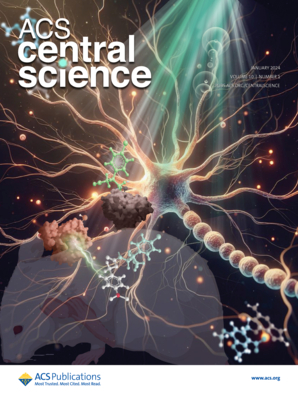Novel multi-functional sites in boron-based bi-atom catalysts synergistically boost C-C coupling for efficient CO electroreduction towards ethanol
IF 12.7
1区 化学
Q1 CHEMISTRY, MULTIDISCIPLINARY
引用次数: 0
Abstract
The electrochemical CO reduction reaction (CORR) is faced by challenges in achieving high-value-added C2 products due to inefficient C–C bond formation and low selectivity. Using first-principles calculations, we propose a framework for boron-based bi-atom doping into a silicene monolayer (B-X@Si) to improve CORR catalytic efficiency. Transition metal (TM)-free B-B@Si and TM-containing B-Cu@Si serve as efficient bi-atom catalysts (BACs) with low limiting potentials (-0.28 and -0.63 V) and low activation barriers for C-C coupling (0.54 and 0.53 eV). The CO* binding strength of active sites with co-adsorbed CO* species follows the order TM < B < B-TM. Remarkably, the interplay within the B-TM pair strengthens CO* adsorption, driven by increased TM involvement, as characterized by the upward shift of the d-band center of TM in B-TM@Si relative to the Fermi level. The coupling kinetics depend on the reactivity of C(CHO*) and CO* fragments within the decoupled CHO-CO* intermediate. Intriguingly, hetero-B-TM@Si systems display a trade-off between stronger CHO* and weaker CO* binding compared to homo-B-B@Si. Among the TMs, Cu is the most appropriate partner for B; the moderate synergistic effect of the B-Cu pair resulting in the smallest augmented C-affinity (CHO*) is offset by the weakest CO* binding strength on Cu itself, ensuring rapid C–C coupling similar to that of B-B@Si. Our BACs offer unique multi-functional active sites due to participation of host atoms (Si*) adjacent to the bi-dopants; these Si-atoms stabilize adsorbates, facilitate the subsequent C–C coupling step, and protect the C–O bond for selective ethanol production. This study provides theoretical insights for the development of advanced BACs with novel multi-adsorbing sites and tailored charge redistribution that enhance CO-to-C2 conversion.硼基双原子催化剂中的新型多功能位点可协同促进 C-C 耦合,从而实现高效的 CO 电还原制乙醇
由于 C-C 键形成效率低和选择性低,电化学 CO 还原反应(CORR)在获得高附加值 C2 产品方面面临挑战。通过第一原理计算,我们提出了一种将硼基双原子掺杂到硅单层(B-X@Si)中以提高 CORR 催化效率的框架。不含过渡金属 (TM) 的 B-B@Si 和含 TM 的 B-Cu@Si 可作为高效的双原子催化剂 (BAC),其极限电位较低(-0.28 和 -0.63 V),C-C 耦合的活化势垒较低(0.54 和 0.53 eV)。活性位点与共吸附 CO* 物种的 CO* 结合强度遵循 TM < B < B-TM 顺序。值得注意的是,B-TM 对中的相互作用在 TM 参与度增加的驱动下加强了 CO* 的吸附,B-TM@Si 中 TM 的 d 波段中心相对于费米水平向上移动就是其特征。耦合动力学取决于去耦合 CHO-CO* 中间体中 C(CHO*) 和 CO* 片段的反应性。有趣的是,与同源 B-B@Si 相比,异源 B-TM@Si 系统显示出较强的 CHO* 结合力和较弱的 CO* 结合力之间的权衡。在 TMs 中,Cu 是 B 最合适的伙伴;B-Cu 对导致最小的增强 C 亲和力(CHO*)的适度协同效应被 Cu 本身最弱的 CO* 结合力所抵消,从而确保了与 B-B@Si 类似的快速 C-C 耦合。我们的 BAC 具有独特的多功能活性位点,这是由于邻近双掺杂剂的主原子(Si*)的参与;这些 Si 原子可以稳定吸附剂,促进后续的 C-C 耦合步骤,并保护 C-O 键,从而选择性地生产乙醇。这项研究为开发具有新型多吸附位点和定制电荷再分布的先进 BAC 提供了理论依据,从而提高 CO 到 C2 的转化率。
本文章由计算机程序翻译,如有差异,请以英文原文为准。
求助全文
约1分钟内获得全文
求助全文
来源期刊

ACS Central Science
Chemical Engineering-General Chemical Engineering
CiteScore
25.50
自引率
0.50%
发文量
194
审稿时长
10 weeks
期刊介绍:
ACS Central Science publishes significant primary reports on research in chemistry and allied fields where chemical approaches are pivotal. As the first fully open-access journal by the American Chemical Society, it covers compelling and important contributions to the broad chemistry and scientific community. "Central science," a term popularized nearly 40 years ago, emphasizes chemistry's central role in connecting physical and life sciences, and fundamental sciences with applied disciplines like medicine and engineering. The journal focuses on exceptional quality articles, addressing advances in fundamental chemistry and interdisciplinary research.
 求助内容:
求助内容: 应助结果提醒方式:
应助结果提醒方式:


